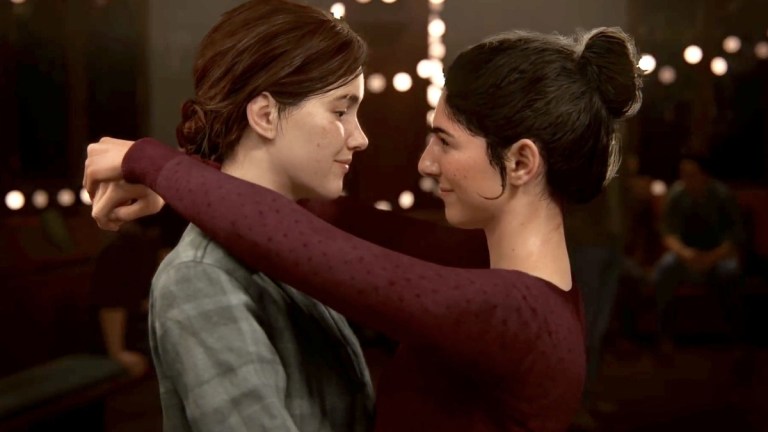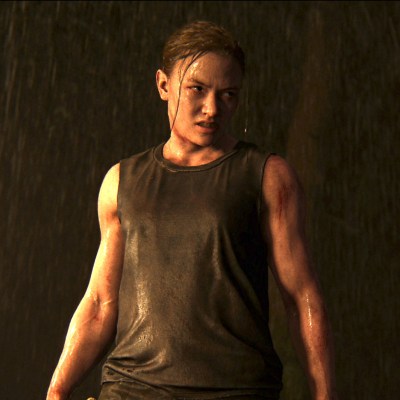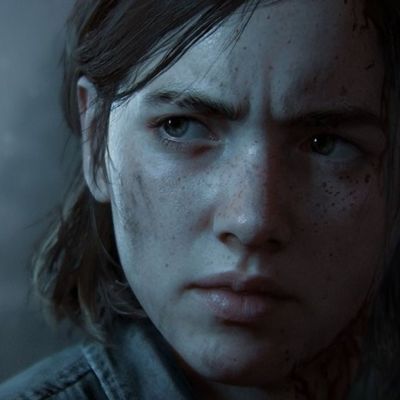The Last of Us Part 2: Why Some Players Hate This Sequel
The Last of Us Part 2 is quickly becoming one of gaming's most divisive titles. Here are some of the reasons why some players hate this game.

This THE LAST OF US PART 2 article contains spoilers.
In a way, it was inevitable that The Last of Us Part 2 would be controversial. After all, it’s the sequel to a game that was not only widely beloved but infamous for an ambiguous finale which some felt didn’t need to be resolved in a follow-up.
Still, the reactions that appeared in the days that followed The Last of Us Part 2‘s initial leaks and eventual release have been somewhat surprising. At this point, when you hear that The Last of Us Part 2 is a divisive title, you’re actually not hearing about just one controversy. There are currently several notable controversies that surround nearly all discussions involving the game. Said controversies have even resulted in thousands of gamers review bombing the game on Metacritic and other review platforms in an attempt to drastically drive down the sequel’s overall user score.
While we can’t quite account for everything about The Last of Us Part 2 that fans object to, we thought it would be a good idea to break down some of the biggest The Last of Us Part 2 controversies in case you were wondering why it has quickly become one of the most debated games in recent history.
The LGBTQ/Diversity Controversy
There is a sadly vocal group of gamers who are criticizing The Last of Us Part 2 over its diverse group of characters and emphasis on LGBTQ characters and storylines.
We really don’t want to spend too much time on this one in an attempt limit how much we amplify those voices, but basically, there are some who think that The Last of Us Part 2 focuses too much on Ellie and Dina’s relationship, a character named Lev who struggles with his gender identity at great risk to himself and his family, and the game’s racially diverse cast of characters.
It’s essentially impossible to meet this particular controversy with a reasonable discussion given the ignorant hatred at the center of it. If you don’t feel that games should champion diversity not only to help more people see themselves in their escapes from an often hard world but to amplify the voices of a greater range of creators so we can all benefit from new ideas and perspectives, then we sadly don’t have the words that will convince you that you have nothing to gain from carrying that hate with you.
For what it’s worth, there are many more who praise The Last of Us Part 2 not only for its diverse characters but for the way that the game portrays and builds them throughout the course of the campaign. This game does an especially wonderful job building the relationship between Ellie and Dina much as the previous game expertly established the relationship between Ellie and Joel.
Joel’s Death Controversy
Roughly a few hours into The Last of Us Part 2‘s campaign, Joel is killed in front of Ellie by a mysterious new character and her band of survivors. We later learn that Joel’s murderer is named Abby and that she’s seeking revenge because she’s the daughter of the doctor who Joel murdered in order to save Ellie at the end of the previous game.
There are a few problems with Joel’s death in the minds of some players.
The first issue concerns the fact that Joel dies at all. Many fans cite Joel as their favorite character in The Last of Us series and were excited to see the direct continuation of his story and relationship with Ellie. Instead, most of Joel’s appearances and interactions with Ellie in this game are limited to flashbacks.
The second major issue with Joel’s death in the minds of some is that they say it does not make sense based on what we know about Joel’s character. Shortly before his death, Joel and his brother Tommy try to help Abby out of a life-threatening situation. In The Last of Us, we see multiple instances of Joel not trusting human survivors. He even goes so far as to try to run one over at one point rather than risk being betrayed by them. Because of his cautious nature, some feel that it’s unlikely he would try to help Abby in these circumstances.
The truth of the matter is that there’s no way to tell someone that they can’t be upset about Joel dying as long as it’s not based on something more sinister. He was a beloved character and many people were sad to see him die (as they arguably should be within the context of the game’s story).
What we will say is that The Last of Us Part 2 essentially revolves around the fallout of Joel’s death, so it’s not exactly a death written into the game simply for the shock value. We’d also argue that Joel has shown in the past that he will go out of his way to protect young women, so it’s not entirely unreasonable that he would be more motivated to protect Abby simply on that basis.
The Marketing Controversy
This controversy deals with the belief that The Last of Us Part 2‘s marketing deliberately misled fans in regards to Joel’s fate and other key plot elements.
The centerpiece of this controversy is a scene featured in one of the game’s trailers in which we see a mysterious figure put their hand over Ellie’s mouth. When she turns around, we see that the mysterious figure is Joel. Ellie asks “What the hell are you doing here?” and Joel replies, “You think I’d let you do this on your own?”
That scene does happen in the game but the key difference is that Joel is replaced by a new character named Jesse (who, it should be noted, is a fairly underwritten and underdeveloped character in comparison to the other main characters in the game). Furthermore, there are some scenes in previous trailers for the game in which we see an older version of Joel interact with Ellie. Those scenes suggest those interactions occur within the “present” timeline of the sequel, but in the game, they’re actually flashbacks that feature a younger version of Joel. It seems that Naughty Dog may have “aged up” Joel in the trailers in order to throw people off the scent of his eventual fate.
Interestingly, this controversy isn’t limited to Joel. At one point, director Neil Druckmann confirmed that Ellie was the only playable character in The Last of Us Part 2. However, we now know you spend a significant amount of time (about half of the game, actually) playing as Abby.
Some feel that Naughty Dog’s alterations are justified given that the studio was trying to preserve and protect some of the twists in the game. However, there are many others who feel that even in the spirit of trying to protect the game’s secrets, these tactics were uncalled for and constitute false advertising.
What we’ll say is that this doesn’t feel like an instance of a game’s story changing over the course of development or that those old scenes and comments actually reflect an older version of the sequel. We’ll also argue that films like Hereditary have managed to conceal the true nature of their story in their trailers, but those trailers utilized clever editing as opposed to deliberately altered scenes in order to achieve that goal.
The Abby Controversy
As we previously mentioned, you play as Abby for about half of The Last of Us Part 2‘s campaign. There are some fans who protest this protagonist swap for a few reasons.
In fact, we talked about two of those reasons in the above controversies. Some people clearly don’t like Abby because she’s a female lead, which, again, is an argument that’s nearly impossible to logically address given the pathetic hatred at the center of it. Others are upset that there’s a second playable protagonist in the game at all (much less this substantial of a playable protagonist) considering that we were told that Ellie would be the game’s only playable character.
There are others who feel that Abby is simply not a very good character. They say that The Last of Us Part 2 does not give you the chance to really care about Abby as much as you care about Ellie, which kind of ruins the idea of seeing this story from two perspectives. Along those same lines, fans also say that they really wanted to see the conclusion of Ellie and Joel’s story and grew to resent having to spend so much time with a new character.
Protagonist swaps in video games have historically been controversial (Halo 2 and Metal Gear Solid 2 are great examples of such controversies), but in regards to this specific instance, we leave it up to you to decide whether or not you feel Naughty Dog successfully utilized Abby within the context of the sequel’s story.
The Last of Us Part 2 Ending Controversy
We’ve already talked about The Last of Us Part 2‘s ending, so if you haven’t beaten the game and want to know what this controversy is about, be sure to check out our breakdown of this story’s conclusion.
The main controversy associated with The Last of Us Part 2‘s ending involves Ellie’s decision to let Abby live. Some fans are simply disappointed that they didn’t get to kill Abby after she killed Joel, which again goes back to the idea that some fans wanted a much more straightforward sequel complemented by a bloody conclusion. Others argue that Ellie’s exact motivation for not killing Abby is based on a vision that occurs at a very convenient moment. Those fans just don’t feel her decision to let Abby go was thoroughly established throughout the game.
Finally, there are those who just generally think that The Last of Us Part 2’s ending doesn’t compare to the original game’s finale in terms of impact or quality. They’re especially bothered by its relatively straightforward nature in comparison to the morally ambiguous conclusion of the previous title.
The Violence Controversy
This controversy is actually not entirely new. Throughout The Last of Us Part 2‘s marketing campaign, some fans felt that the sequel’s trailers and promotional material relied too heavily on violence (specifically violence against women). They argued that the marketing’s prolific use of such violence began to make it feel a bit gratuitous.
The final version of The Last of Us Part 2 adds an extra layer to this particular debate. The Last of Us Part 2 is a very violent game, but its themes deal heavily with admonishing the ideas of unnecessary violence and the cycle of vengeance. The problem is that the game often forces you to do violence against enemies that it later tries to add personalities and stories to in order to make you feel guilty for your actions.
Some have argued that the lack of control the game gives you in regards to how you resolve enemy encounters not only dilutes the idea that you have inflicted unnecessary violence but also comes across as a bit condescending. There’s not a clear divide between the actions of the player and the actions of Ellie as a character, which makes The Last of Us Part 2‘s story feel like more of a roller coaster that just takes you along for a curated ride even during sequences where you seemingly have control over the situation.
That said, this is another one of those issues where your interpretation of the matter really comes down to your personal feelings regarding the extent of the violence in the game and whether or not it is utilized in an effective way in regards to the sequel’s story, characterization, and world-building.


